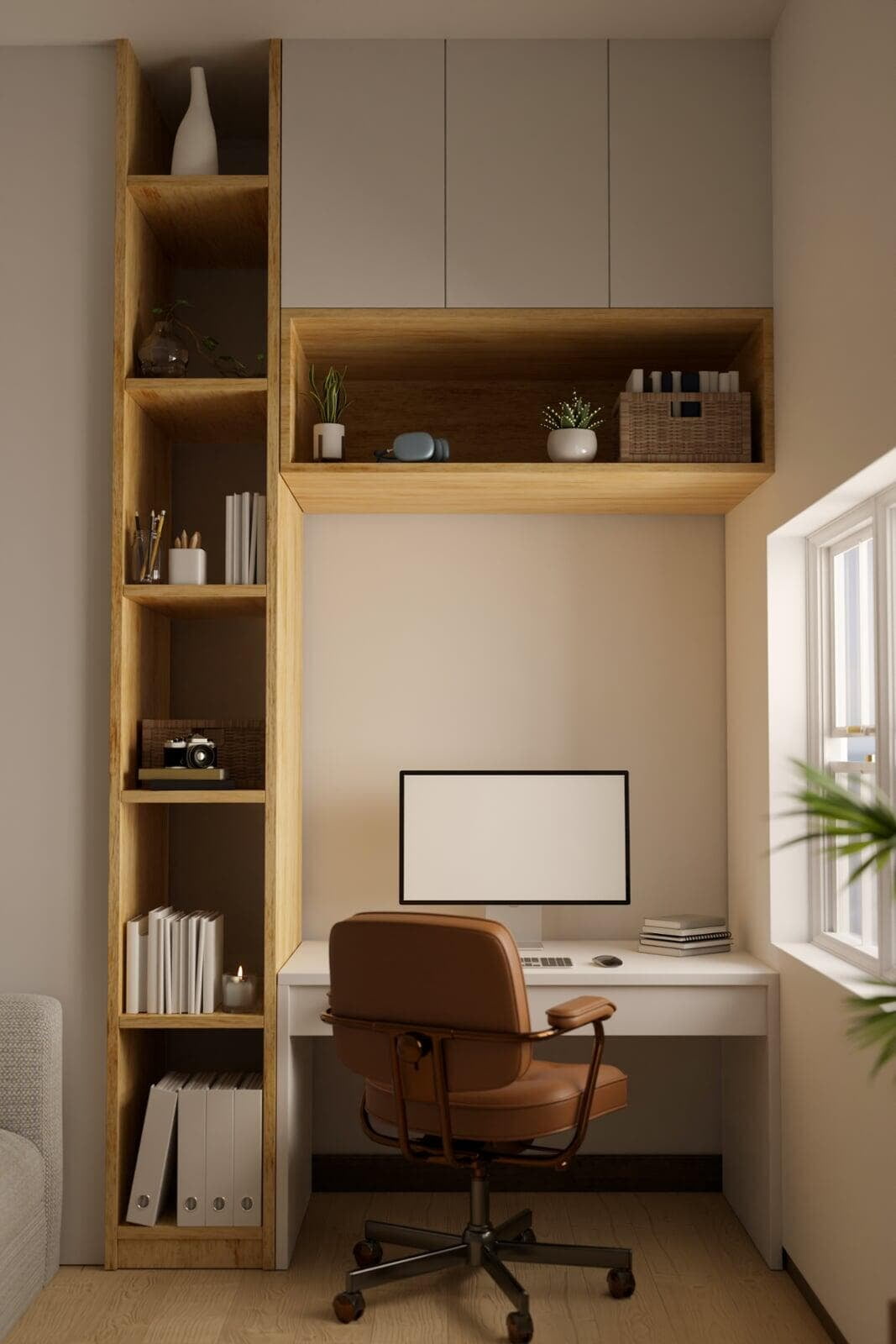Introduction
When it comes to cabinetry, choosing the right material is crucial for durability, appearance, and overall performance. Both plywood and MDF (Medium Density Fiberboard) are popular engineered wood options, but they each have unique qualities that make them suitable for different types of cabinets. This guide will break down the pros and cons of each material to help you make an informed decision on which is better for your cabinets..

Understanding Plywood and MDF
What is Plywood?
Plywood is made by layering thin sheets of wood veneer, glued together with the grain of each layer running perpendicular to the one before it. This cross-grain pattern enhances the strength and reduces warping, making plywood a strong, versatile material.
- Key Characteristics: Strength, stability, and resistance to moisture and warping.
- Grades Available: Plywood comes in various grades, like BWP (Boiling Water Proof), MR (Moisture Resistant), and commercial grade, each suited to different applications.
What is MDF?
MDF is made from fine wood fibers mixed with resin and compressed under high pressure. It has a smooth, consistent texture that’s free from knots and grains, making it ideal for painting and precise cuts.
- Key Characteristics: Smooth surface, ease of cutting, and cost-effectiveness.
- Grades Available: Standard MDF, moisture-resistant MDF (MR MDF), and high-density MDF.
Comparing Plywood and MDF for Cabinets
A. Strength and Durability
- Plywood: Known for its structural strength, plywood holds screws and fasteners better than MDF, making it an excellent choice for heavy cabinetry or cabinets that hold a lot of weight.
- MDF: MDF is softer and denser but is prone to denting and chipping. It’s also less durable than plywood under heavy loads and doesn’t hold screws as well over time.
Winner: Plywood for heavy-duty use or larger cabinets; MDF for lighter-duty or decorative cabinets.
B. Moisture Resistance
- Plywood: Plywood, especially BWP grade, is more resistant to moisture, making it suitable for kitchen or bathroom cabinets where humidity can be an issue.
- MDF: Standard MDF is not moisture-resistant and can swell or deteriorate when exposed to water. However, moisture-resistant MDF (MR MDF) is a viable option in low-moisture areas.
Winner: Plywood in high-moisture environments; MR MDF can work in low-moisture areas.
C. Workability and Finish
- Plywood: The layered texture of plywood can make it challenging to achieve a smooth, even finish, especially on edges. However, plywood takes wood veneers and laminates well.
- MDF: MDF has a smooth, consistent texture ideal for painting, veneers, and decorative finishes. Its fine texture also allows for intricate cutting and shaping, making it a go-to for detailed designs.
Winner: MDF for painted finishes or intricate designs; plywood for veneered finishes.
D. Cost
- Plywood: Plywood is typically more expensive due to its complex manufacturing process and superior durability.
- MDF: MDF is more affordable than plywood, making it an economical choice for budget-conscious projects without sacrificing style.
Winner: MDF for budget-friendly options; plywood for longer-lasting investments.
E. Eco-Friendliness
- Plywood: High-quality plywood, especially those certified as eco-friendly, tends to be a more sustainable option due to its lower use of adhesives and formaldehyde emissions.
- MDF: MDF is generally less eco-friendly than plywood because it requires more resin and sometimes uses formaldehyde-based adhesives.
Winner: Plywood for eco-conscious buyers.
Ideal Applications for Plywood and MDF in Cabinets
Plywood Cabinets
- Best Uses: Kitchen cabinets, bathroom cabinets, and heavy-duty storage.
- Advantages: Plywood is resilient to moisture, is long-lasting, and has strong screw-holding capability, making it ideal for cabinets that will see high usage.
- Drawbacks: Higher cost and challenges in achieving a smooth edge finish.
MDF Cabinets
- Best Uses: Decorative cabinets, cabinetry with painted finishes, and interior-only cabinets (away from moisture).
- Advantages: Smooth texture ideal for painting, customizable with intricate designs, and budget-friendly.
- Drawbacks: Less durable than plywood, susceptible to moisture, and can chip more easily.
Choosing the Right Material Based on Room Type
Kitchen Cabinets
- Recommendation: Opt for plywood in kitchens, as it offers the strength and moisture resistance required for a frequently used space. Plywood’s durability ensures it holds up well over time, despite high heat and humidity.
Bathroom Cabinets
- Recommendation: Use BWP-grade plywood for bathrooms, as it’s resistant to warping and moisture, while MDF is not suitable for high-humidity environments unless coated with a waterproof finish.
Living Room or Bedroom Cabinets
- Recommendation: For living rooms or bedrooms, MDF is an affordable and practical choice. It’s excellent for wardrobes, bookshelves, and decorative storage cabinets, where moisture and heavy loads are less of a concern.
Office or Workspace Cabinets
- Recommendation: MDF works well in office settings where budget is a priority, and cabinets don’t bear heavy loads. It also allows for easier customization and smooth painted finishes that suit modern workspace aesthetics.
Tips for Making the Right Decision
- Consider the Environment: Choose moisture-resistant plywood or BWP-grade plywood for areas with high humidity, such as bathrooms and kitchens.
- Assess Your Budget: If budget is a significant factor, MDF is the more affordable option and can still be highly functional in low-humidity and low-wear spaces.
- Think About Longevity: Plywood tends to last longer, so if durability is a priority and you’re investing in high-quality cabinetry, plywood is likely the better choice.
- Opt for Mixed Materials: Consider mixing MDF and plywood within the same project. For example, use plywood for cabinet boxes and MDF for cabinet doors to balance cost and durability.
Conclusion
Both plywood and MDF have their unique strengths and are best suited to different applications. For long-lasting, moisture-resistant cabinetry that will hold up under wear and tear, plywood is the superior choice, especially for kitchens and bathrooms. However, MDF offers a more budget-friendly, smooth-finished option that works beautifully in decorative and interior cabinetry.
Understanding each material’s properties, costs, and applications allows you to make an informed choice based on your specific needs. By considering factors like room environment, style preferences, and durability requirements, you can choose the perfect material to create stylish and functional cabinets that stand the test of time.






